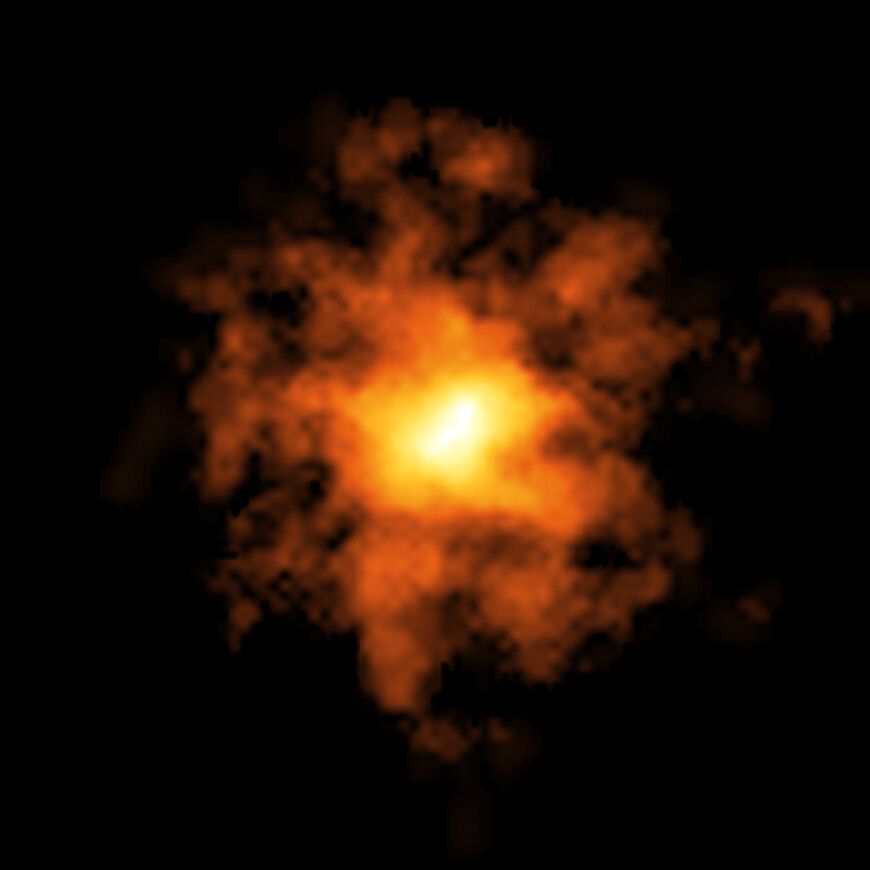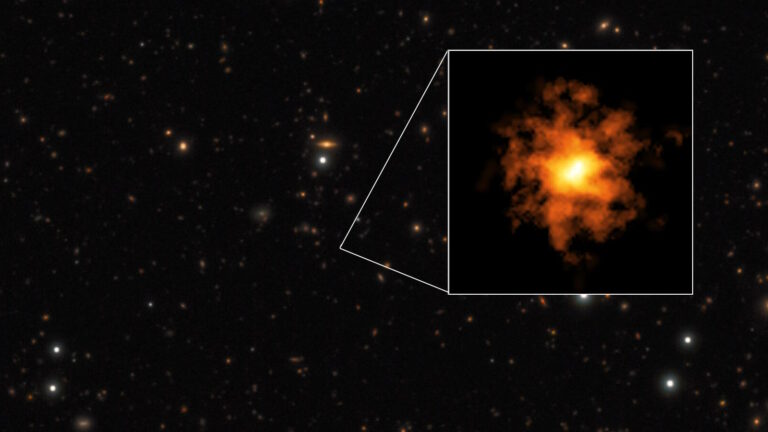Ancient Spinning Galaxy Sets New Record, Posing Challenges to Cosmic Evolution Theories
An unknown galaxy has been found by the scientists that holds steady, strong, and well-organized rotation contrary to the previous beliefs that proposed primordial galaxies were disorderly and unorganized.
Scientists confirmed the existence of the first galaxy in the Universe with a well-structured and fast-rotating system, which is contrary to the earlier conception of galaxies as being more chaotic during their birth
Scientists have observed a rotating disk seen only a few million miles and the earliest spinning disk galaxy ever seen in the Milky Way’s newest expansion.
This galaxy, REBELS-25, is moving too fast and its spin is similar to that of the Milky Way’s spiral arms: which in conclusion would mean it could be more developed than the Milky Way.
When it was observed 700 million years after the Big Bang, the galaxy was wrongly hypothesized as a small and disordered object, which could not be further from the truth because it really has an orderly structure.
The discovery was made by a team of astronomers using the Atacama Large Millimeter/submillimeter Array (ALMA), a network of 66 radio telescopes located in Northern Chile’s Atacama Desert.

“According to our understanding of galaxy formation, we expect most early galaxies to be small and messy-looking,” team member Jacqueline Hodge, an astronomer at Leiden University in the Netherlands, said in a statement.
A tidy young rebel
Like our 13.8-billion-old universe, the modern twist of galaxies such as the Milky Way are by far one of the ones which have had billions of years to populate its segregate aspects, such as those featuring the large spiral arms.
It was the early universe.
In this stage of the nervy and puzzling universe, scientists were predicting noisy and massive clouds in the galaxies. It was understood that through the long years of collisions and mergers, the early galaxies of irregular forms grow into the ones of the orderly shapes observed today like disks and spiral arms.
Nonetheless, the detection of REBELS-25 has today the universe at 5% of its present age been looked at is the proof that the above timeline is at variance.
“Discovery of the galaxy REBELS-25, which is a really similar galaxy to our Milky Way, whose predominant rotation is even, questions the opinion we have that in the initial period, galaxies would quickly evolve to the well-organized galaxies we know today,” said Lucie Rowland, the study’s lead researcher from Leiden University.

This galaxy already seemed very interesting to us, as it showed clear signs of rotation.
After the preliminary datawas announced, the researchers began another round of observations with ALMA at a higher resolutioncapturing the structure and motion of the galaxy in more detail. The subsequent set of downloadings unveii^ed that the gas in REBELS-25 was moving towards us and also away from us, and the phenomena of blueshift and redshift explained it.
It happens because the light source changes its position and moves towards Earth, so its light waves get compressed and the spectrum shift towards the blue end, known as blueshift. Moreover, if the light source moves away its wavelengths will stretch, shifting them towards the red, which is called as redshift.
REBELS-25 holds the title of the youngest and the most distant galaxy with a high rate of rotation ever seen.
“Only ALMA has the sensitivity and resolution to detect such a mark,” Renske Smit, from Liverpool John Moores University, said.
There is more to be found in the case of REBELS-25. According to the basic observations, it possesses the characteristics similar to those of the 13.6-billion-year-old Milky Way, such a^the bar of stars and the spiral arms. If true, the down would form the longest spiral galaxy discovered and It^wouldbreak the total distance record, CEERS-2112, was discovered by the James Webb Space Telescope at the age of the universe of 2.1 billion years.
“Lucie Rowland wrapped it up by saying that the appearance of the much more complex constructs could also be the point at which the most distant galaxy with those attributes could be found,” added Lucie Rowland.
The team’s research has been accepted for publication in the Monthly Notices of the Royal Astronomical Society.
Do not forget to share your opinion with us to provide you with the best posts !




0 Comments